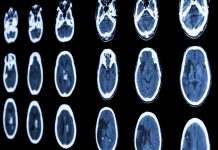One in eight adults (12.7%) who are infected with SARS-CoV-2 experience long COVID symptoms, including chest pain, difficulties breathing, painful muscles and more
A large study published in The Lancet has reported the most recent findings of long COVID symptoms in adults, looking at the frequency of new or severely increased symptoms across a population of people who have been diagnosed previously with COVID-19.
Attaining a more reliable estimate for the prevalence of long term COVID than in previous studies, they found that amongst adults who had COVID-19, 21.4% experienced at least one new or severely increased symptom three to five months post-infection compared to before infection, compared to 8.7% of uninfected people in the same time period.
Looking at individuals’ symptoms both before and after SARS-CoV-2 infection, they identified core symptoms of long COVID: chest pain, difficulties breathing, pain when breathing, painful muscles, loss of taste and smell, tingling extremities, lump in throat, feeling hot and cold, heavy arms and/or legs, and general tiredness.
How did they find data on long-term COVID-19 symptoms?
The inclusion of uninfected populations facilitates a more accurate prediction of long-term COVID-19 symptom prevalence – as well as improved identification of the core symptoms of long term COVID.
Researchers collected data by asking participants of the population-based Lifelines COVID-19 Cohort to regularly fill out digital questionnaires on 23 symptoms commonly associated with long term COVID.
The questionnaire was sent out 24 times to the same individuals between March 2020 and August 2021 meaning participants who had COVID-19 during this time were infected with the SARS-CoV-2 alpha-variant or earlier variants.

Most of the data was collected before the COVID-19 vaccine rollout in The Netherlands so the number of vaccinated participants was too small to analyse in this study.
Participants were recorded as COVID-19 positive if they had either a positive test or a doctor’s diagnosis of COVID-19. Of 76,422 participants, 4,231 (5.5%) participants who had COVID-19 were matched to 8,462 controls taking account of sex, age and time of completing questionnaires that indicated a COVID-19 diagnosis.
Providing a reliable estimate OF how likely long COVID-19 is to occur in the general population
Prof Judith Rosmalen from the University of Groningen, lead author of the study, said: “There is urgent need for data informing the scale and scope of the long-term symptoms experienced by some patients after COVID-19 illness.
“However, most previous research into long COVID has not looked at the frequency of these symptoms in people who haven’t been diagnosed with COVID-19 or looked at individual patients’ symptoms before the diagnosis of COVID-19.
“Our study approach looks at the symptoms most often associated with long COVID, including breathing problems, fatigue and loss of taste and/or smell, both before a COVID-19 diagnosis and in people who have not been diagnosed with COVID-19.
“This method allows us to take pre-existing symptoms and symptoms in non-infected people into account to offer an improved working definition for long COVID and provide a reliable estimate at how likely long COVID-19 is to occur in the general population.”
Several symptoms were new or more severe three to five months after having COVID-19
These symptoms are compared to symptoms before a COVID-19 diagnosis and to the control group – suggesting these symptoms can be viewed as the core symptoms of long COVID.
The core symptoms recorded were chest pain, difficulties breathing, pain when breathing, painful muscles, loss of tase and/or smell, tingling hands/feet, a lump in throat, alternately feeling hot and cold, heavy arms and/or legs and general tiredness.
The severity of these symptoms plateaued three months after infection with no further decline. Other symptoms that did not significantly increase three to five months after a COVID-19 diagnosis included headache, itchy eyes, dizziness, back pain and nausea.
These symptoms can be used to distinguish between post COVID-19 condition and non-COVID-19-related symptoms
PhD candidate and first author of the study, Aranka Ballering said: “These core symptoms have major implications for future research, as these symptoms can be used to distinguish between post-COVID-19 condition and non-COVID-19-related symptoms.”
Of the study participants who had submitted pre-COVID symptom data, the researchers found that 21.4% (381/1,782) of COVID-19-positive participants, compared to 8.7% (361/4,130) of the control group, experienced at least one increased core symptom at moderate severity 3 months or more after SARs-CoV-2 infection.
This implies that in 12.7% of COVID-19 patients, their new or severely increased symptoms three months post-COVID can be attributed to SARS-CoV-2 infection.
Prof Judith Rosmalen said: “Future research should include mental health symptoms (e.g. depression and anxiety symptoms), along with additional post-infectious symptoms that we could not assess in this study (such as brain fog, insomnia, and post-exertional malaise).
“We were unable to investigate what might cause any of the symptoms observed after COVID-19 in this study, but we hope future research will be able to give insights into the mechanisms involved. Furthermore, due to the timing of this study we were unable to assess the effect of COVID-19 vaccination and different SARS-CoV-2 variants on long COVID symptoms.
“We hope future studies will provide answers on the impacts of these factors.”
Editor's Recommended Articles
-
Must Read >> 30% of Long COVID patients had no existing illnesses















